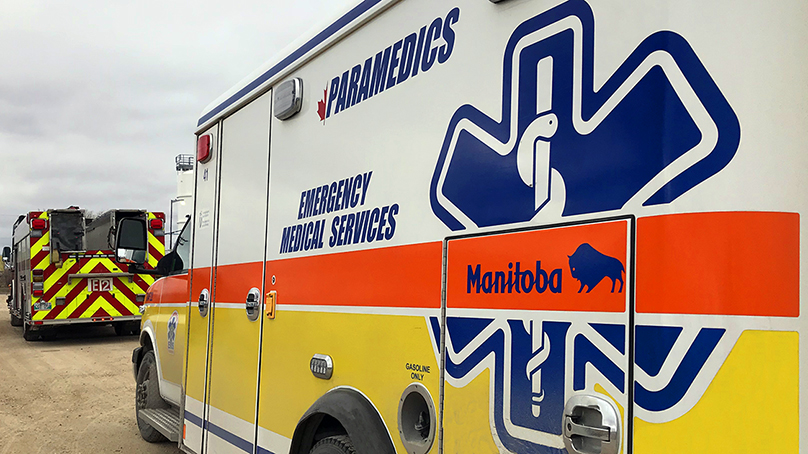
The Winnipeg Fire Paramedic Service crews respond to hundreds of thousands of 9-1-1 calls each year. They respond from stations positioned around the city and from the road.
Working around the clock, every shift brings a new situation and many emergency calls for help.
Organizing these responses is a big job. Our leaders and 9-1-1 telecommunications professionals work hard to ensure we have the resources where we need them.
Assigning the right crew at the right time
WFPS first responders have different skill sets to ensure they can respond to anything.
Firefighters can have special training in hazardous materials, high-angle rescue, confined spaces, water and ice rescue, or wildland fires.
Paramedics have four scopes of practice, ranging from Primary Care Paramedics to Advanced Care Paramedic Practitioners. Each scope has its own skill set and tools. Advanced Care Paramedics, for example, can administer different medications than Primary Care Paramedics.
Each shift has a balance of all these first responders and their skills. WFPS 9-1-1 telecommunicators assign crews to incidents based on their availability, skill set, and the patient's needs.
We can adjust as the shift unfolds and different calls come in.
When a station is not available
Sometimes, we cannot use a certain station. For example, we could be renovating it, or nearby roadwork could be preventing crews from entering and exiting the station. Our goal is to respond to emergencies as fast as possible, so any delays are a problem.
We will do everything we can to avoid removing crews from stations. We will schedule building work strategically. We might also work with Public Works or other agencies to complete the work in a way that doesn't need us to send crews somewhere else.
If this isn’t possible, we may need to temporarily assign crews to another station or location. We look at which other crews can respond in the area and which crews have overlapping response areas. Then, we assign crews to the station or other location that sets them up to respond to the area as quickly as possible.
We will look at the city as a whole and decide where to deploy crews for the best response capability. We consider the population of the area, hazard risk, and staffing. We also look at which crews are on duty and their training. For example, the water rescue team needs to be near the water rescue boat and other resources in case they need to use it for a response.
When the crew is already on the road
Often, firefighters and paramedics are on the road when they receive an assignment. They may be leaving the hospital from transferring a patient, or they’ve finished their work on a scene and are leaving.
The 9-1-1 telecommunications professionals will look for the nearest available unit when assigning crews to time-dependent calls. This means a fire-paramedic crew already travelling may be able to get to the scene faster than a crew in a station.
We use GPS and maps to ensure we’re assigning the closest resource to the incident.
When the crew is not available
Sometimes a firefighter or paramedic crew cannot respond to calls at a certain time. They might be assigned to another incident, completing a hygiene protocol, or doing mandatory training.
In this case, even though they seem like they may be the closest responding unit, we’ll assign another nearby unit. This is why we have some response areas that overlap with others.
Some incidents need more crews to respond for long periods of time. For example, a structure fire can take many hours to put out. All the closest crews would respond, which could leave a gap in one part of the city. In this case, we’ll send crews from one station to another. This way we have resources spread throughout the city and ready to respond.
Long-term planning
WFPS published the WFPS Strategic Direction in 2020. It includes a master plan for WFPS stations in Winnipeg. It explains how reducing the total number of WFPS stations but positioning them more strategically will improve response times. It also highlights the importance of Emergency Vehicle Pre-Emption, a system where WFPS vehicles get right-of-way at intersections.
Building a new temporary (and future permanent) WFPS station in Waverley West and consolidating stations in Windsor Park and St. Boniface are two of the recommendations from this plan we’ve recently completed.
We measure response times, and we are constantly reviewing our operations.
How you can help
Calling 9-1-1 can be stressful but we’re here to help. When you call 9-1-1, providing accurate and clear information can help us make sure we assign the right resource at the right time for your emergency. Remember a9-1-1 is only for emergencies.
